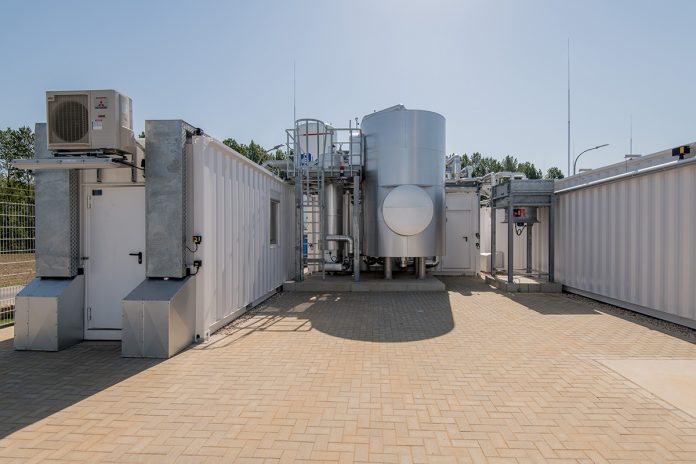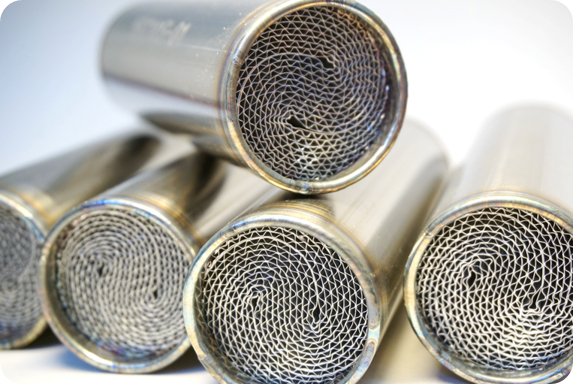
The Horizon 2020 project STORE&GO focuses on the remarkable potential of power-to-gas and synthetic methane as forms of renewable energy
Europe has just passed its second warmest and maybe driest summer on record. Even northern regions faced unusual drought, heat waves and even wildfires as is rather typical for Mediterranean countries. In fact, much is being discussed about climate change and global warming. Climate protection is high on the public agenda and European Union (EU) politicians are already calling to raise the CO2 reduction target from the current level of –40% to –45% by 2030.
This ambitious goal, however, can only be met by covering large parts of future energy demand by making the most efficient use of renewable energies. One important hurdle that has to be overcome concerns wind and solar power, both of which tend to be volatile and intermittent due to their seasonal nature, and at times surpassing or not complying with demand. Thus, energy has to be storable in the long-term and available when needed.
With that in mind, 27 European research partners have gathered under the roof of the EU project STORE&GO. Their overall goal is to find solutions and innovative technologies that guarantee a sustainable path towards a low-carbon future. The focus is on power-to-gas (PtG) applications and how they fit in the European energy grid as an important step of the energy transition(1.)
Funded under Horizon 2020 and coordinated by the DVGW (German abbreviation for German Technical and Scientific Association for Gas and Water), STORE&GO puts special emphasis on the methanation process of green hydrogen produced by hydrolysis in PtG plants. To investigate how this technology can be integrated into the energy system, the project is currently running three pilot methanation plants with different innovative power-to-gas technologies: in Falkenhagen, Germany; in Solothurn, Switzerland; and in Troia, Italy; with the Falkenhagen site being the first one in operation.
Reality check on the ground
The German demo site was inaugurated in May 2018 in the region of Prignitz in Brandenburg. Falkenhagen is an ideal location due to its high wind generating capacity and a well-developed power and gas infrastructure that is already in place there. In this typical rural region, wind farms and photovoltaic systems generate large quantities of renewable power. However, the energy demand in this area is lower and power is transported across considerable distances, causing significant transmission losses.
The new methanation plant was built right next to an existing PtG pilot plant from 2013 that produces hydrogen and thereby stores wind energy within the natural gas grid. It offers even more possibilities for the storage for renewable energies by providing “green” methane. In this second stage, “green” hydrogen from regenerative energy sources is converted into methane (CH4) or synthetic natural gas (SNG) using CO2 from a bio-ethanol plant.

For that purpose, a prototype honeycomb catalytic reactor for methanation is installed and is being tested during the project. The methanation plant produces up to 57 m³/h of SNG (at normal pressure and temperature), which equates to a gas output of 600 kW. By comparison – with the amount of gas that is produced in one hour, a modern 50 square metre apartment could be heated for a month.
The so produced green methane can contribute significantly to the success of the energy transition. Other than hydrogen, it has a wide range of uses and can flow into all markets, such as the heating or mobility sector. Moreover, it provides for the unrestricted use of the natural gas infrastructure, including for transport and storage. This stored energy is then available as a backup whenever there is an insufficient supply of solar and wind power. Moreover, the heat generated by the process is used by a nearby veneer plant.
Legal uncertainties for the power-to-gas process
What seems possible on a demo level might be difficult in reality, so a team of STORE&GO legal experts have identified hurdles in the existing regulatory and legislative framework with respect to the deployment of power-to-gas processes and products – in both, the EU and the host countries of the project pilot plants.
“Power-to-gas is associated with various new concepts which are not yet sufficiently considered under current EU and national legislation. For example, energy storage as an asset and hydrogen and SNG as renewable energy carriers, have only recently gained attention from legislators”, explains Gijs Kreeft from the University of Groningen, which is one of the STORE&GO partners. According to his research, these new technological developments lead to various fundamental legal issues that have to be addressed.
“For example, it is not clear whether environmental authorisation procedures should consider power-to-gas plants as chemicals-producing installations rather than installations that produce energy commodities”, explains Kreeft. He adds that it is also necessary to define it and under which circumstances, power-to-gas is a gas producing activity instead of, or besides, an energy or gas storage technology.
This lack of clear regulation and legal definitions is, according to Kreeft, due to a low level of awareness: “Policymakers do not yet fully comprehend the power-to-gas process and its potential for the transition towards a low-carbon energy system. Consequently, power-to-gas and synthetic methane are not considered in renewable energy promotion policies to the same extent as other renewable energy technologies are”.
Action is, therefore, required at the EU and national level and as such, regulations must be harmonised and take into account the need for seasonal storage. Permit procedures have to be evaluated and clarified. Double-taxation practices should end and support schemes that are developed. Another efficient measure could be the introduction of a carbon tax, which would make renewable gases more competitive. Last but not least, research and development (R&D) have to be further supported to advance the PtG technology as far as possible in terms of both technical and commercial efficiency.
(1) See also Open Access Government July 2018, pp. 308.
Please note: this is a commercial profile
Dr Frank Graf
Research Coordinator
DVGW Research Centre at
Engler-Bunte-Institute of Karlsruhe
Institute of Technology (KIT)
Tel: +49 (0)721 608 41221










